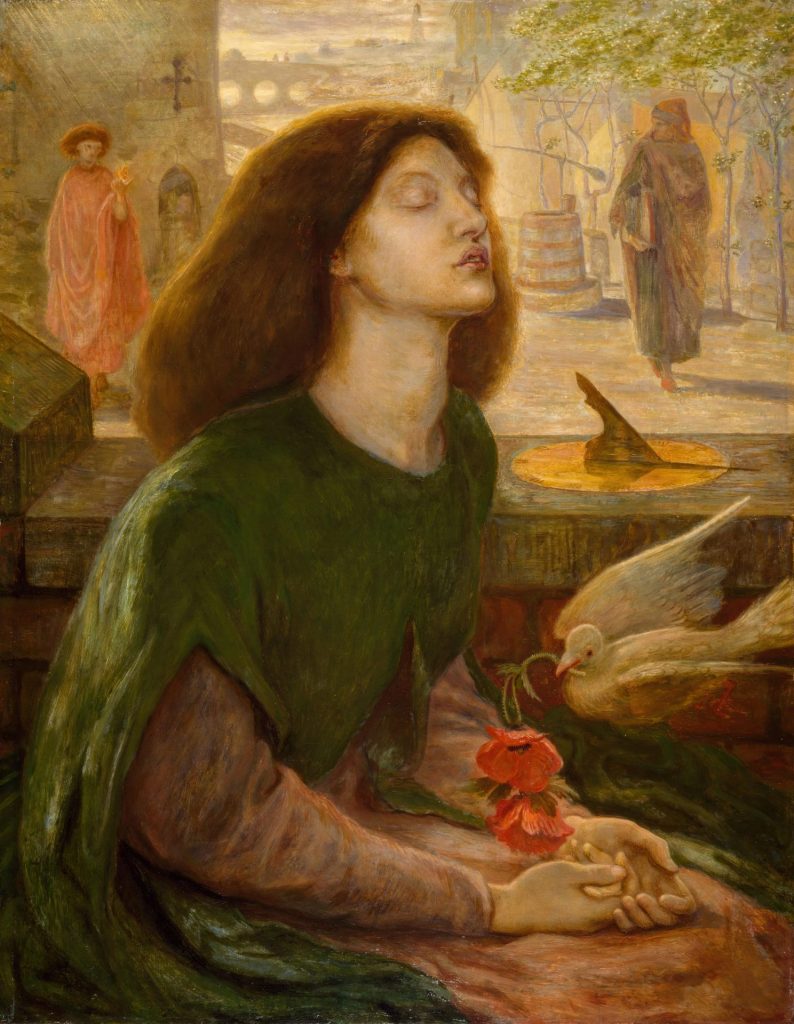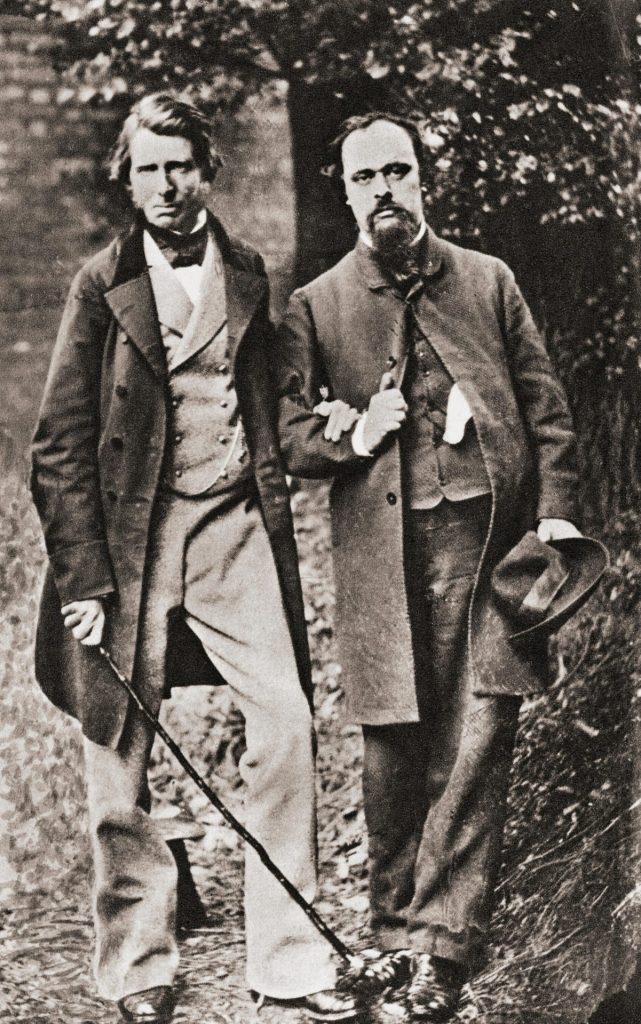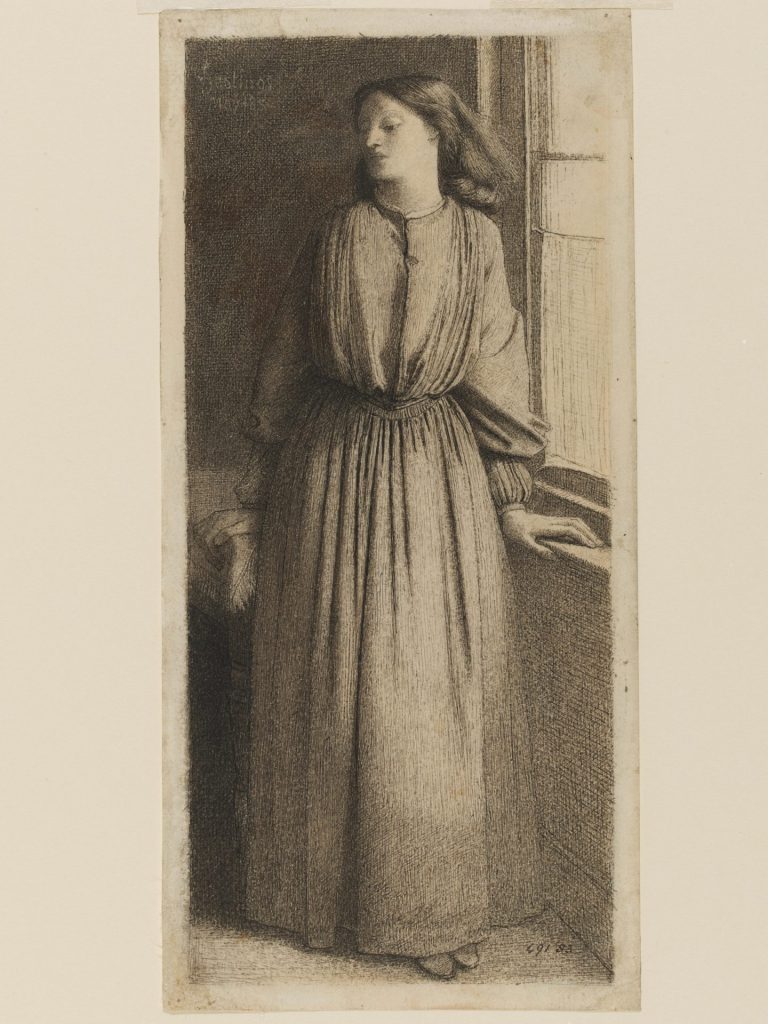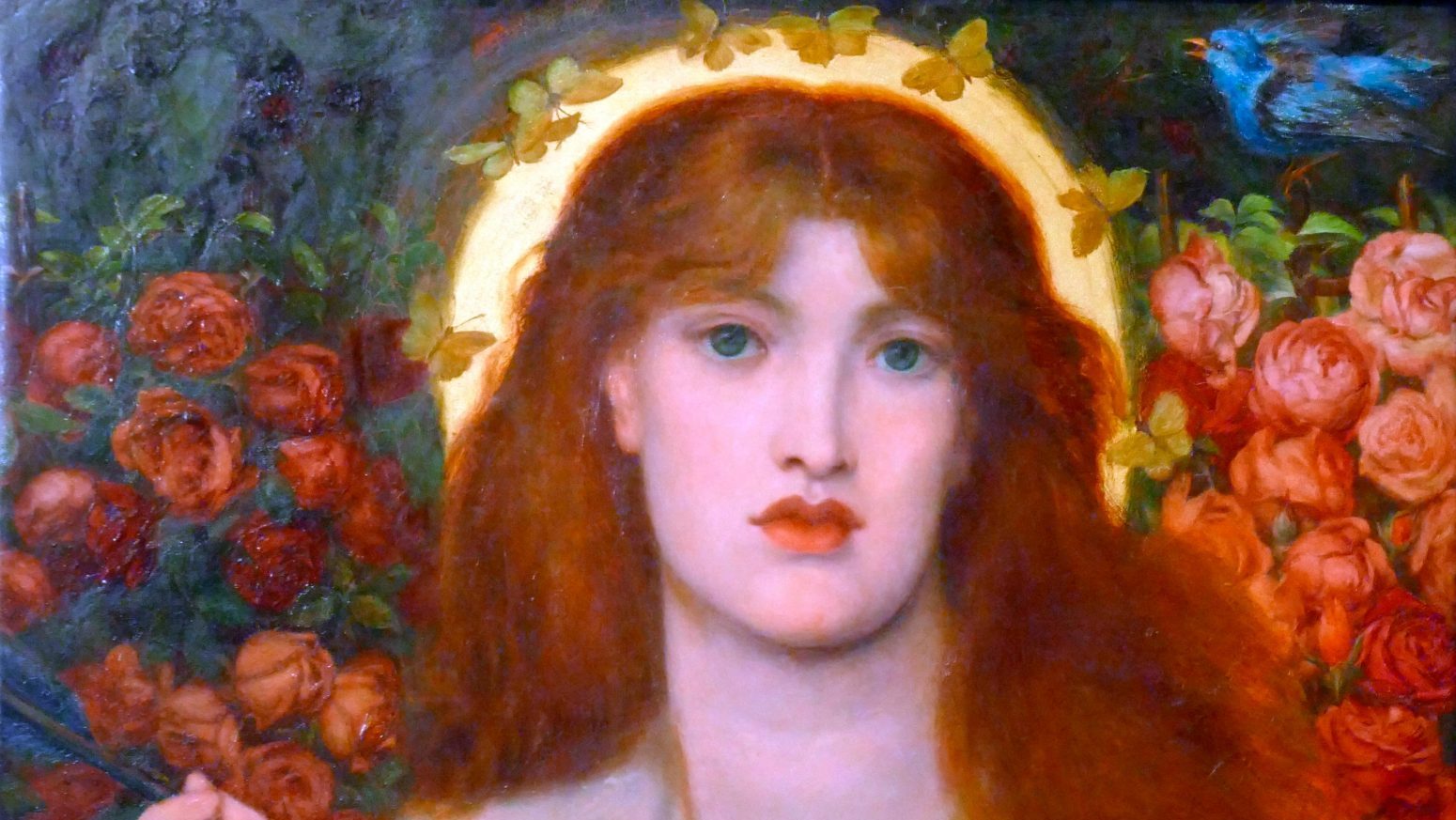The son of a teacher who was half Italian and of a Dante scholar and professor of Italian at King’s College, London, the boy was christened Gabriel Charles Dante. Born in 1828, he grew up in an artistic home, the second of four children, among them a sister, Christina, a poet, and the subject of one of his earliest portraits.
At 17 he was training at the Royal Academy Schools, then in Trafalgar Square, and in 1848 aged 20, he translated Dante’s epic love poem La Vita Nuova. It was this work that was to inform one of his most important and best-loved pictures, Monna Vanna.
Also in 1848, he became one of the seven founding members of the Pre-Raphaelite Brotherhood, the others including his brother William Michael, William Holman Hunt and John Everett Millais. In championing a return to the principles of art before Raphael, the PRB name slightly throws art-lovers off course. In essence, the movement was declaring allegiance to the indulgence of Venetian artists dedicated to colore – colour – rather than to the more studious rational of the Florentine emphasis on drawing, composition and line in disegno.
Thus the working title of Monna Vanna (1866) was Venus Veneta, reflecting its Venetian opulence. But it was finally named after a character in La Vita Nuova, dismissively dubbed ‘Vain Woman’. In this way the painter layered on to its central character some disapproval of her luscious trappings, lovingly portrayed with enjoyment of its different textures – teasing feathers, glittering gems, blousy flowers and extravagant folds of rich brocade.
Posing for Monna Vanna was Alexa Wilding, a model with whom the artist maintained a purely professional rapport. By contrast, the personalities of three women beloved of the painter are revealed in other narrative paintings and out-and-out portraits, and it is these three women who are at the heart of a new exhibition dedicated to Rossetti’s portraiture at the Holburne Museum, Bath, curated by Sylvie Broussine who, with Christopher Newall, is co-author of the book Rossetti’s Portraits that accompanies the exhibition.
The three women – Elizabeth Siddall, Frances Cornford and Jane Morris – all came from working-class backgrounds. Each was accepted into the increasingly liberal, if male-dominated, art world. The PRB may have started out by sitting for each other’s portraits, partly to save money, but it was a brotherhood totally reliant on women.
Foremost among the portraits dominated by these three women is Blue Silk Dress (Jane Morris), painted two years after Monna Vanna. Despite its title and those brackets, it is Jane Morris, born Jane Burden and wife of Arts and Crafts pioneer William Morris, who counts here, however lovely her sumptuous sapphire gown. Against a lavish curtain in crimson velvet, she clasps her hands in a tense embrace.

She and Rossetti, who adored her, were to meet frequently through her husband’s business, and the 1868 painting is packed with symbols of the convoluted – the winding tendrils of a vine, the cut flowers as reminder of finite earthly pleasures, a bracelet in several pieces entwined into one complex object.
In 1869 the writer Henry James met Jane Morris, and observed: “… hard to say [whether] she’s a grand synthesis of all the pre-Raphaelite pictures ever made – or they a ‘keen analysis’ of her – whether she’s an original or a copy. In either case she’s a wonder.”
The synthesis to which he refers goes back to Dante’s first great love, the model and artist Elizabeth Siddal, who first modelled for Rossetti in 1849. This was the year his first oil painting to go on public display was shown in London, signed with his newly re-ordered name, Dante Gabriel Rossetti, emphasising his affinity with the poet. Siddal modelled for others in the PRB, notably in 1852 for Millais, shivering in the bath as Shakespeare’s Ophelia. That year she was Dante’s Beatrice for Rossetti, and from then on modelled only for him.

Marrying in 1860, they honeymooned in Paris, where the experience of seeing work by Titian in the Louvre lead to a dramatic change in Rossetti’s style. While the rest of the PRB was engaged in moralistic or narrative work, Rossetti splashed out on portraits and themed paintings that ooze opulence and excess. Cue the voluptuous model Frances Cornforth, whom, according to her memoirs, Rossetti encountered at a fete in Walworth, south London, held to celebrate the return from the Crimea of Florence Nightingale. She recalled that as she, a stranger, passed Rossetti he fondled her hair which tumbled down – that Titianesque red hair that was to become the hallmark of his work and even of the PRB generally.
The association that developed with Cornforth continued through his marriage and after. In 1862, within months of the death of a stillborn daughter, Siddal died of an overdose of laudanum. She had always had indifferent health. As early as 1854 PRB friend and mentor Ford Madox Brown recorded that Siddal was “thinner & more deathlike & more beautiful & more ragged than ever”.

Upon her death, Cornforth moved into Rossetti’s lodgings, now in Cheyne Row, Chelsea, officially as housekeeper, and she posed for a number of pictures in Venetian style.
The crowning glory of paintings featuring Cornforth is The Blue Bower (1865). References to the model are embedded in the picture, with its passionflowers, morning glory and, at the foot of the painting, a tribute of blue cornflowers, a nod to her surname. At one level it is a private conversation between lovers. At another, it is a tribute to a whole world of artistic achievement. Fanny Cornforth makes as if to play the Japanese koto, against a wall of hexagonal tiles in the Arabic tradition decorated with blossom motifs again reminiscent of Japanese art.
Even established as a painter with alluring works such as this, Rossetti did not let go of the literary aspirations fuelled by his affinity with Dante. Seven years after Siddal was buried, he regretted the romantic gesture that had prompted him to bury his own poetry with her. The grave was exhumed. Six months later Dante Gabriel Rossetti’s poems were published.
Warning: Illegal string offset 'link_id' in /mnt/storage/stage/www/wp-includes/bookmark.php on line 357
Notice: Trying to get property 'link_id' of non-object in /mnt/storage/stage/www/wp-includes/bookmark.php on line 37








